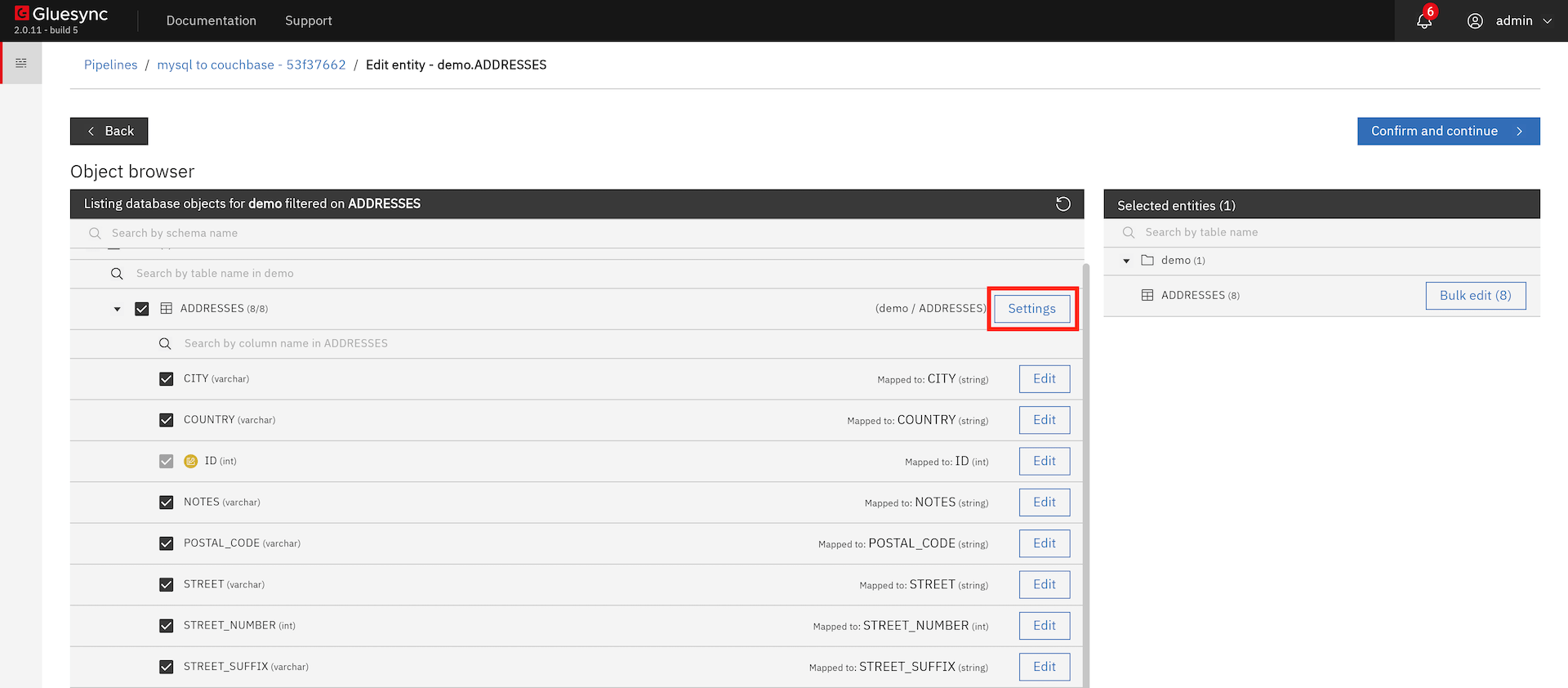TTL (Time To Live) Tagging
Time To Live (TTL) tagging allows you to automatically expire and remove records from your target database after a specified time period. This feature helps manage storage usage and ensures your database only contains relevant, up-to-date data.
| TTL functionality depends on the target datastore’s native TTL capabilities. Gluesync configures the TTL setting in the target datastore, but the actual record expiration and removal is handled by the target datastore’s internal processes. |
Configuring TTL for Your Target Database
You can easily set up TTL for your target database by following these steps:
Step 1: Access Entity Settings
-
Navigate to your desired entity in the Gluesync interface.
-
Click on the settings (gear) icon to access the entity’s configuration.

Step 2: Locate TTL Setting
-
In the settings menu, scroll down until you find the TTL (Time To Live) section.
-
The TTL is measured in seconds by default, but the actual unit (seconds, milliseconds, etc.) depends on the target service’s implementation. A value of 0 means no TTL.

Step 3: Configure TTL Value
-
In the Value field, enter the duration after which records should expire.
-
The unit of measurement depends on the target service (typically seconds or milliseconds)
-
Example (assuming seconds): 86400 = 1 day, 604800 = 1 week, 2592000 = 30 days
-
-
The setting will be applied to all new records created after saving the configuration.

Important Notes
-
TTL functionality requires that your target datastore supports TTL natively.
-
The TTL setting is passed to the target datastore, which handles the actual record expiration and removal.
-
TTL can be modified at any time by editing the entity settings.
-
The TTL value of 0 (default) means records will not expire automatically.
-
Existing records in the database will not be affected by TTL changes; only new records will use the updated TTL value.
-
The TTL process runs periodically in the target datastore, so there might be a delay between when a record expires and when it’s actually removed from the database.
-
The exact behavior of TTL (including timing and guarantees) depends on the specific target datastore’s implementation.
-
Ensure your application can handle record expiration appropriately.